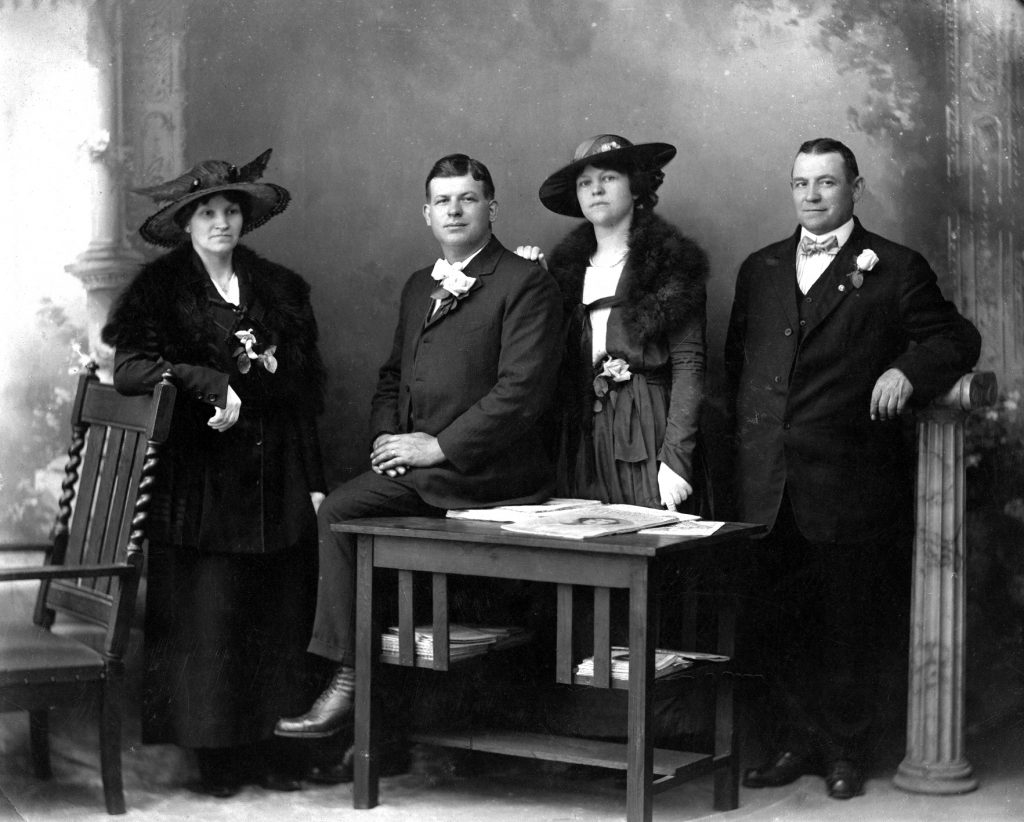Volume 3, Issue 26
Dating back to the earliest years of the United States, immigration was a welcomed occurrence; the arrival of new European immigrants was believed to bring desirable traits that would strengthen American stock. Despite this early stance on a process that was of little concern to most Americans, groups surfaced with the intention of restricting or ending waves of immigration.
The emergence of the Know-Nothing Party of the 1840s and 1850s brings forth a “Gangs of New York” image to the minds of many. The exact level of activity of such groups in Orleans County is uncertain, but we do know that men such as John Hull White of Albion and Elisha Whalen of Medina were aligned with these political ideas. White, a Conservative Democrat in the years when Republicans considered themselves the “Party of Lincoln,” found it impossible to win an election in our Republican-dominated county.
An influx of Irish and German immigrants established an unfounded fear of the Catholic Church, while many of these immigrants flooded into the emerging sandstone quarries of our region, bringing with them a willingness to toil amidst dynamite and heavy stone. Shortly after came the laborers from the Norfolk region of southern England, who with pickaxe and shovel, filed into the ranks with the Irish and Germans. Minimal legislation meant no visas, no limitations, no need for connections to family already in the United States, nor guarantee of work.
The mass of immigrants from Southern and Eastern Europe starting in the 1860s and 1870s raised questions about the ongoing solvency of unrestricted immigration. With the passing of the Chinese Exclusion Act of 1882, the federal government established a solid stance on the limitation of specific immigrants, prohibiting any immigration of individuals from China. Additional laws passed over the following decades created the conditions experienced at places like Ellis Island, the conditions that so many genealogists read about.
Immigrants were no longer desirable, their genetic traits more likely to diminish the hearty stock of American citizens than strengthen. These new immigrants were viewed as unwilling to assimilate, preferring to gather in ethnic communities while retaining their cultural and religious practices. Their presence developed unfounded fears of disease, leading the federal government to limit access to those “likely to become a public charge,” polygamists, sexual deviants, anarchists, radicals, and the disabled.
Agents at ports of entry would observe immigrants for physical defects, limps, poor posture, feeble natures, weakness, and abnormal body shape, many feeling as though they could learn more about an immigrant’s physical condition from a few moments of unnoticed observation than they could through detailed medical examinations. These laws created the concept of the illegal immigrant, who concealed illness and disability, or lied about political beliefs to try their luck at a better life in a country determined to keep them out; until this point, there was no illegal immigration.
I found myself reflecting on this image of my great grandparents, taken on the day of their wedding in 1919, as I prepare to travel to their hometown of Wabcz, Kujawsko-Pomorskie in Poland. I often think of the hardships they endured. Frank Kaniecki, seated upon the table, was three years old when he arrived at Ellis Island with his parents and younger brother Paul. His mother, eight months pregnant, gave birth to a baby girl during the journey across the Atlantic, the baby dying several days later. One can imagine Frank’s father, Antoni, leading his grieving wife with two toddlers in tow through the lines of immigrants while agents observed their every move. Rose Romanski, standing with her hand on Frank’s shoulder, was only one year old when her parents brought her to America.
At the time this photograph was taken, both were celebrating their second marriage. Each lost their spouses to consumption, a condition that often ravaged the immigrant populations that labored in the quarries. Their marriage, one of necessity, ensured that the children from their previous marriages were cared for, eight in total. These families, arriving amidst the influx of new immigrants out of German-controlled Poland, found themselves fleeing ongoing pressure to destabilize the Catholic Church and suppress the Polish culture. Generally accepted within the community of Albion, Frank changed his last name from Kaniecki to Crane in the 1930s in the hopes of attracting more American customers to his grocery store in Albion’s Polonia.
As few of our ancestors would qualify for legal entry into the United States under the laws of today, we should be forever grateful that they were afforded the opportunity to start a new life in America. The resilience of our immigrant ancestors is an amazing thing.


